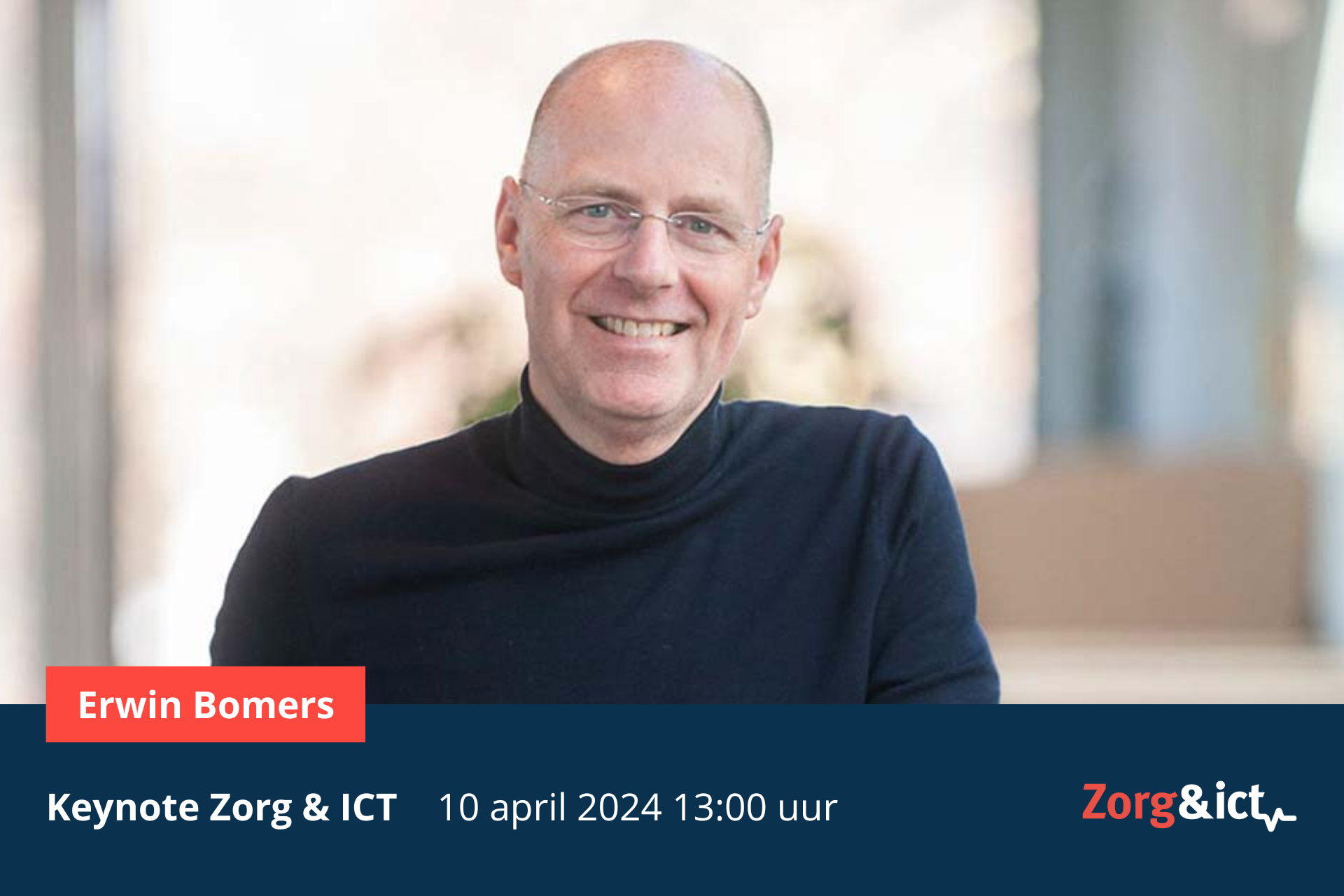Digitalization will connect care, cure and welfare in a new way in the coming years. So predicts director Erwin Bomers of care provider Marga Klompé. "Where we currently still have institutions such as hospitals and nursing homes, other forms of care are going to emerge." This does come with conditions: cross-sector funding, structural financing of digital care and digital emancipation of citizens.
Continuous proximity
As the pressure on elderly care increases, healthcare provider Marga Klompé must look for new ways to shape its own core values. Digitalization is an indispensable tool in this regard, Bomers believes. "There is now sufficient evidence that digitalization can also be warm. It is precisely with digitization that you can keep that warm side intact. With digitization you add value in a way that you cannot achieve at all in the analog world. Think of security and continuous proximity. Proximity is now a push of a button. Digital technology makes things possible that weren't possible before."
Life Circles
As an example, Bomers mentions the use of smart sensors and cameras in night care. "As a result, we no longer have to constantly disturb our clients by checking whether they are still in bed."
Another example is the so-called "living circles. According to Bomers, the freedom of clients with dementia is increased many times over by the digital babysitting function. "In the analog world, it was either the door was locked or a caregiver had to continuously make sure people didn't wander or walk into town. Now we can monitor remotely with a sensor. Because we can follow them, people can go wherever they want. Of course, we do that in consultation with the family."
Vulnerable
If there are any objections to such a computer-oppas, Bomers says they do not come from clients. "Among clients, I don't notice much resistance to digital care at all. They find it especially important that care is timely and loving. As the feeling of safety decreases, digitalization is further allowed. If you are vulnerable and you feel unsafe, watching in a living room or bedroom is often not a problem."
New reality
And if the clients are happy, eventually the employees are too, Bomers observes. "Our clients sometimes adopt it easier than our employees. They wonder what it means for their jobs. How should they relate to this new reality in which the technological possibilities are increasing, while we don't know exactly what it will look like? That's exciting and challenging at the same time. But if it helps the client, healthcare professionals are willing to move past that."
Quadruple aim
Although immensely important, client satisfaction is ultimately only one factor in answering the question of whether, where and how digital care should be deployed. "We try to put the client's wishes first. But we also know that the number of caregivers is only going to decrease. There is an increasing imbalance in the ratio of care recipients to care providers. So you look for alternatives. If you really want to do it right, those alternatives must be better than the old situation, both from the point of view of good care and financially and in terms of staff deployment. That's why we always link digital care to the quadruple aim."
Regional platform
This management paradigm wants innovations not only to have a positive impact on quality, health and costs, but also to improve employee experience and perception. An ambitious goal that compels collaboration.
In the Achterhoek region, the joint healthcare providers have established the Digitale Zorg Achterhoek (DZA) association for this purpose. The association is responsible for a healthcare academy and an exchange platform, the Integrated Regional Data Infrastructure Achterhoek (GERDA). This platform fulfills an increasingly prominent role in further digitization of healthcare in the region.
AI can predict bottlenecks
"We are now entering a phase where we can collect data across organizations," Bomers explains. This is crucial to solve staffing bottlenecks. "To do joint evening, night and weekend shifts, you need to be able to look into each other's files."
But GERDA doesn't stop there as far as Bomers is concerned. "GERDA is a platform where all that information can come together. Based on that, we are now carefully looking at whether we can apply AI to it. Pattern recognition by AI can soon help us see connections that we don't see at first glance. Now we are mostly reactive in healthcare. We are going to provide care when someone presses the bell. Information technology is going to help us be proactive by predicting where things are going to get stuck and where things are going to go wrong. For example, I think the general practitioner already has a lot of people in the picture who are going to be living with us in two or three years."
Aging and de-growth
With the joint approach, the Achterhoek shows itself to be a forerunner in regionalization. Besides good will, Bomers says it was mainly local circumstances that drove the providers into each other's arms. "The Achterhoek is a geographically defined area with 400,000 inhabitants. With two associations of general practitioners, two hospitals, six VVT organizations and eight municipalities, it is a manageable area. In addition, the aging of the population is a step further than in the rest of the Netherlands. We also have to deal with de-greening, because there is no college or university. So highly educated young people are leaving the region. All this has been the reason to start acting together."
Digitally competent
Exemplary as the current collaboration is, it also requires continuous maintenance. "The trick is to keep all the frogs in the wheelbarrow," says Bomers. "Everyone is at a different level of digitalization. Moreover, some parties are larger than others and can therefore make different investments. For the association, it is exciting to keep all parties connected. Is everyone able to bring their own organization up to flight level? You can get knowledge from the country and the association, but are you able to set up the organization to be digitally competent?"
Structural funding
Money for investment would be welcome in this regard, but funding for digital care is still far from optimal, according to Bomers. "It now depends on subsidies. We have lived on that in recent years. Now IZA funds are coming loose. But you have to move toward structural funding of digital care that goes beyond the walls of Zvw, Wlz and Wmo."
PBM as a pillar
Of particular concern to Bomers is the further development of the personal health environment (PBL). This is intended to give patients more control over their own health. For DZA this is a pillar for a sustainable healthcare system.
"I have serious concerns about whether the PBM is going to see the light of day at all," Bomers says. "Professionals have their own records. But the care recipient should also have access to that information. If we are going to demand more self-direction from those caregivers who can, then they must have all the data and information and be able to share it with whomever they want. The data and information from different care providers contains a wealth of information and knowledge that is currently invisible. Unlocking all that is going to have a real impact on healthcare. We are only at the beginning of this revolution in healthcare. That is exciting and challenging at the same time."
Data availability is one of the core themes during Zorg & ict 2024. The largest health tech event in the Netherlands will be held from April 9 to 11 at Jaarbeurs in Utrecht. Erwin Bomers will perform as one of the keynotes on the mainstage. Register for free.












